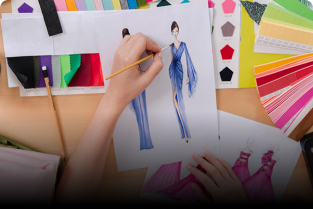Starting a business as a fashion designer is a dream for many creative minds. With passion, creativity, and the right strategy, you can turn your love for fashion into a successful brand. However, like any other business, building a fashion label requires careful planning, industry knowledge, and persistence. If you’re wondering how to start a business as a fashion designer, here’s a step-by-step guide to get you started.
1. Develop Your Fashion Design Skills
Before starting a fashion business, you need to refine your design skills. A fashion designer should understand:
-
Sketching and illustrating designs
-
Pattern making and garment construction
-
Fabric selection and textile knowledge
-
Latest fashion trends and styles
If you’re new, consider enrolling in a fashion design course or learning through online platforms. Practical skills are just as important as creativity.
2. Identify Your Niche
Fashion is a vast industry, so it’s essential to find your niche. You can specialize in:
-
Women’s wear
-
Men’s wear
-
Kids’ fashion
-
Ethnic/traditional clothing
-
Sustainable and eco-friendly fashion
-
Luxury or affordable streetwear
Focusing on a niche helps you build a unique identity and connect with your target audience.
3. Create a Business Plan
A solid business plan is the backbone of any fashion business. It should cover:
-
Your brand vision and mission
-
Target audience and market research
-
Budget and funding requirements
-
Pricing and production strategy
-
Marketing and sales plan
This will guide your decisions and attract investors if needed.
4. Build Your Brand Identity
Your brand is more than just clothing—it’s about the story, values, and emotions you communicate. Focus on:
-
Choosing a unique brand name and logo
-
Defining your brand’s personality (luxury, casual, eco-conscious, trendy)
-
Creating consistent branding across labels, packaging, and social media
A strong brand identity helps your designs stand out in a crowded market.
5. Source Materials and Manufacturers
Finding the right materials and production partners is crucial. Depending on your budget, you can:
-
Start small by making garments yourself
-
Partner with local tailors or small workshops
-
Work with larger manufacturers for bulk production
Always test fabric quality and production consistency before scaling.
6. Build a Portfolio and Collection
Start with a small, well-curated collection to showcase your design style. Your portfolio should reflect your creativity and versatility. This collection can be used for fashion shows, pop-up events, and online promotions.
7. Launch an Online Presence
In today’s digital age, having an online presence is non-negotiable. Create:
-
A professional website with an online store
-
Social media pages (Instagram, Pinterest, Facebook, TikTok)
-
Engaging content showcasing your designs, behind-the-scenes work, and fashion tips
Collaborate with influencers or run small ads to reach your target customers.
8. Start Selling
You can sell your designs through multiple channels:
-
Your own website or online store
-
Marketplaces like Etsy, Amazon, or Myntra
-
Pop-up shops and local boutiques
-
Fashion exhibitions and trade shows
Focus on customer feedback to improve your designs and offerings.
9. Market Your Brand
A strong marketing strategy helps grow your fashion business. Use:
-
Social media campaigns
-
Influencer collaborations
-
Fashion shows and exhibitions
-
PR and press coverage in fashion magazines
-
SEO for your online store
Consistency in branding and marketing builds long-term recognition.
10. Stay Updated and Adapt
Fashion is fast-changing. Keep an eye on new trends, consumer preferences, and technology like digital fashion or sustainable fabrics. Adapt your designs and business model to stay relevant.
Conclusion
Starting a business as a fashion designer requires a mix of creativity, planning, and persistence. From improving your design skills and building a brand identity to launching online and selling your collections, every step brings you closer to establishing your own fashion label.

